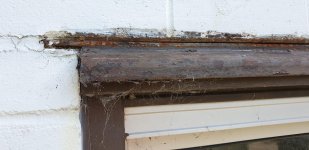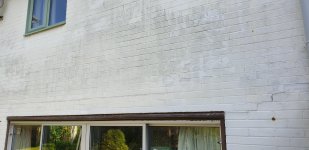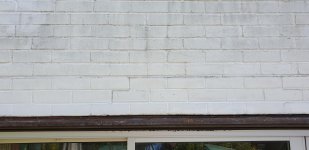Hi there,
I have some old aluminium patio doors that are around 4 to 5 m long. As you can see from the below pictures there has been some moisture ingress into the inside of the house and the lintel is showing a little surface rust through the plaster.
I had assumed this was because the caulking on the outside had failed, so I pulled it all away.
As you can see, there is a gap between the lintel and the wall above for the length of the lintel, this gap ranges from 2mm to 5mm.
From having had a quick look on the Internet the suggestions seem to be...
1) this gap should be caulked to prevent water ingress.
2) this gap should not the caulked and should be left as a weep hole (but driving rain would come in).
3) this gap should be mortared to ensure that the bricks above are supported.
So in summary, I now have no idea what the best course of action is...
Can anyone advise?
Thanks
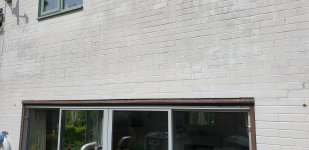
Window from outside.
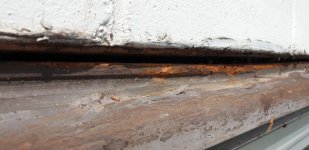
Gap between lintel and Wall.

Rust marks on inside plaster.
I have some old aluminium patio doors that are around 4 to 5 m long. As you can see from the below pictures there has been some moisture ingress into the inside of the house and the lintel is showing a little surface rust through the plaster.
I had assumed this was because the caulking on the outside had failed, so I pulled it all away.
As you can see, there is a gap between the lintel and the wall above for the length of the lintel, this gap ranges from 2mm to 5mm.
From having had a quick look on the Internet the suggestions seem to be...
1) this gap should be caulked to prevent water ingress.
2) this gap should not the caulked and should be left as a weep hole (but driving rain would come in).
3) this gap should be mortared to ensure that the bricks above are supported.
So in summary, I now have no idea what the best course of action is...
Can anyone advise?
Thanks

Window from outside.

Gap between lintel and Wall.

Rust marks on inside plaster.


